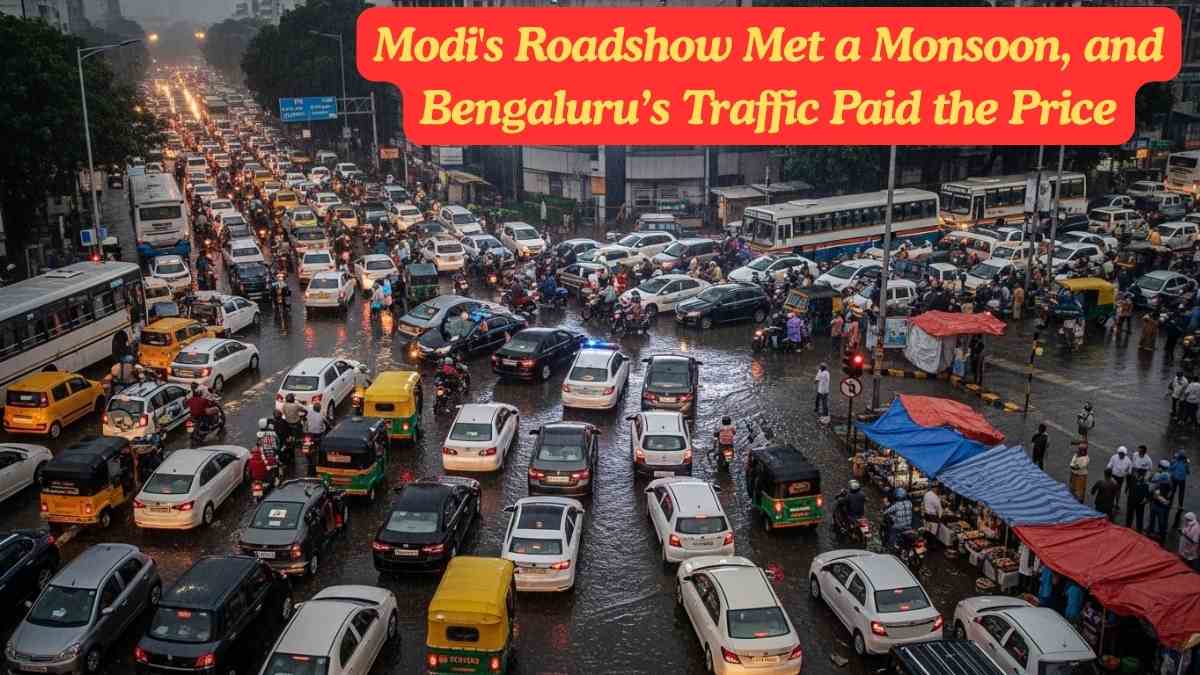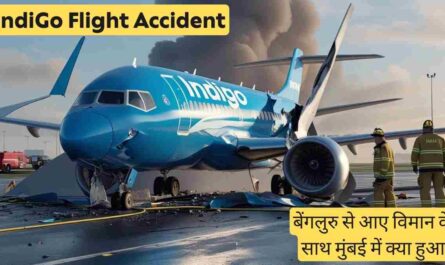Bengaluru’s Roads Paralyzed as Rain and a VVIP Visit Create a Perfect Storm of Traffic Chaos
Bengaluru’s notorious traffic reached a breaking point this past Sunday, as a combination of a sudden downpour and security arrangements for Prime Minister Narendra Modi’s visit brought the city to a grinding halt. Commuters setting out for their weekend plans found themselves trapped in a city-wide gridlock, with journeys that normally took minutes stretching into hours. The dual impact of nature’s fury and a high-profile political event left thousands of residents stranded and venting their frustrations on social media.
The VVIP Movement and City-Wide Lock-Down
The day’s schedule included a roadshow for Prime Minister Narendra Modi, who was in the city for a public event. His convoy was set to travel from HAL Airport to the Raj Bhavan, a route that cuts through several key areas of the city. In preparation, Bengaluru’s traffic police implemented extensive security measures, including widespread traffic diversions and barricading along the entire route.
Roads like Old Madras Road and those within the Central Business District (CBD) were either completely blocked or had restricted access. This funneled an enormous volume of traffic onto already congested alternative routes. While the police had issued advisories ahead of time, the sheer scale of the diversions proved too much for the city’s road network to handle, creating bottlenecks that quickly spiraled into massive traffic jams.
A Sudden Downpour Adds to the Misery
As the city grappled with the traffic restrictions, a heavy spell of rain began in the late afternoon and continued into the evening. The downpour quickly led to severe waterlogging in several low-lying areas and on major arterial roads known for their poor drainage. The Outer Ring Road (ORR), a critical lifeline for Bengaluru’s tech corridor, was one of the worst-hit areas. Commuters reported bumper-to-bumper traffic that barely moved for hours.
Other major choke points included Hebbal, Mekhri Circle, and Ballari Road, where the combination of diverted traffic and flooded streets created an impassable situation for many. Waterlogged underpasses and overflowing drains left vehicles submerged and drivers with nowhere to go. The rain not only slowed down traffic but also caused breakdowns, further compounding the gridlock.
Commuters’ Frustrations Boil Over on Social Media
Trapped in their cars with no end in sight, frustrated residents took to social media platforms like X (formerly Twitter) to share their ordeal. The platform was flooded with images and videos showing long lines of stationary vehicles, inundated roads, and people wading through knee-deep water.
Many users shared their travel times, reporting that a simple 15-minute trip had turned into a two-hour nightmare. Others directed their anger at the city’s civic authorities, questioning the lack of preparedness for the monsoon and the poor planning that allowed two major disruptive events to occur simultaneously. For thousands of Bengalureans, the day was a stark reminder of the city’s crumbling infrastructure, which seems to buckle under the slightest pressure, whether from rain or a scheduled VVIP event.
As the evening wore on, the traffic slowly began to ease, but not before leaving a trail of exhausted and frustrated commuters. The “Silicon Valley of India” was once again left to ponder how a modern metropolis could be so easily and completely paralyzed.
Updated on August 18, 2025 with latest context.



